Using the data compiled from the RX360 v2 thermal testing I have compiled the following tables in an attempt to show other ways of how the RX v2 performance varies against itself at the flow rates and fan speeds tested. First let’s take a look at the raw W/10DT numbers we will be using for this:
Effectively these show percentage gains relative to a reference point. It’s an interesting way to show gains/losses while changing a variable. This first table shows performance gain or loss relative to 1.0GPM flow rate:
We can also focus on 1300RPM as our reference and see how much gain or loss in performance we get by changing fan speed:
As expected the change is dramatic. How about we combine both flow rate and fan speed as reference points and have a look at 0.5 GPM & 750 RPM as the reference:
Lastly, we change the reference and choose our centre 1300 RPM and 1.0 GPM as our reference point to show both effects concurrently:
So from the data above we can get a very good idea of how the RX360 v2 radiator performs relative to itself. But there is a large selection of 360mm radiator models to choose from, released from numerous manufacturers. So, we need to start comparing performance between them. To see how the RX v2 performed against the other radiators tested, I have included the averaged flow rate comparison charts from the Round Up. We know that the flow rate has little impact on thermal performance so averaging of the 3 flow rate results gives us a good look at head to head performance at the rpm speeds tested at with even less error.
First let’s take a look at the push only data:
At 750RPM the RX v2 is already in 5th place – an excellent result for an older design. While the V3 beats it, the difference is small.
At 1300 RPM the V2 is in 5th place, while the V3 has fallen to 7th place.
At 1850RPM though the V2 is starting to fall behind the competition and slips firmly to the middle of the field. Now let’s look at push/pull. Given what we’ve seen the results may be worse.
This time the V2 starts off in 7th, and is already ahead of the V3. Clearly both radiators are tuned for low speed fans, while the V3 is tuned for even lower speeds than the V2.
At 1300 RPM the V2 does better relatively in push/pull than it did in push.
At 1850RPM the interesting results continue whereby the V2 starts moving back up the charts.
If we purely focus on 1GPM results then we can also compare the push data directly to the push/pull data:
At 750RPM the V2 in Push is beating the worst of the push/pull setups, while the Push/Pull v2 has a sizeable lead over any push only setups.
At 1300 RPM, the XE360 in push is starting to approach the V2 in push/pull.
However at 1850RPM the V2 in push/pull has pulled away again from the push only setups maintaining a clear lead. The push only V2 has also overtaken several push/pull setups.
From all of these results we can create a “master performance factor”. The radiator with the best cooling ability (W/10ΔT) at each gpm/rpm combo was awarded a score of 100, and each other radiators W/10ΔT result was scored as percentage of the top performer:
All those high numbers again confirm the RX v2 as a fantastic all-rounder that is tweaked more towards lower speed fans. While never finishing first place in any of the test combos, it was never too far behind any results either.
Then all these percentage scores were averaged giving us the Averaged Performance Factor of each radiator. This way of looking at the comparison takes away any advantages that a radiator may have at higher or lower fan speeds and looks at an overall average. While this appears fair it does tend to favor those radiators that are all-rounders and those radiators which do very well at high RPM. Most users should be more focused on their specific use case. Check in the Round Up for performance comparisons at every gpm/rpm combo for even more details and cross comparison results.
Again let’s start with the push only performance metric:
The score of 92.7 puts the V2 in fifth place overall – a staggering score for an older design! Interestingly it’s also slightly above the V3.
In Push/Pull the V2 drops to 9th place, but this is still a great effort. Here it extends it’s lead over the newer V3 design.
Next up – Summary!








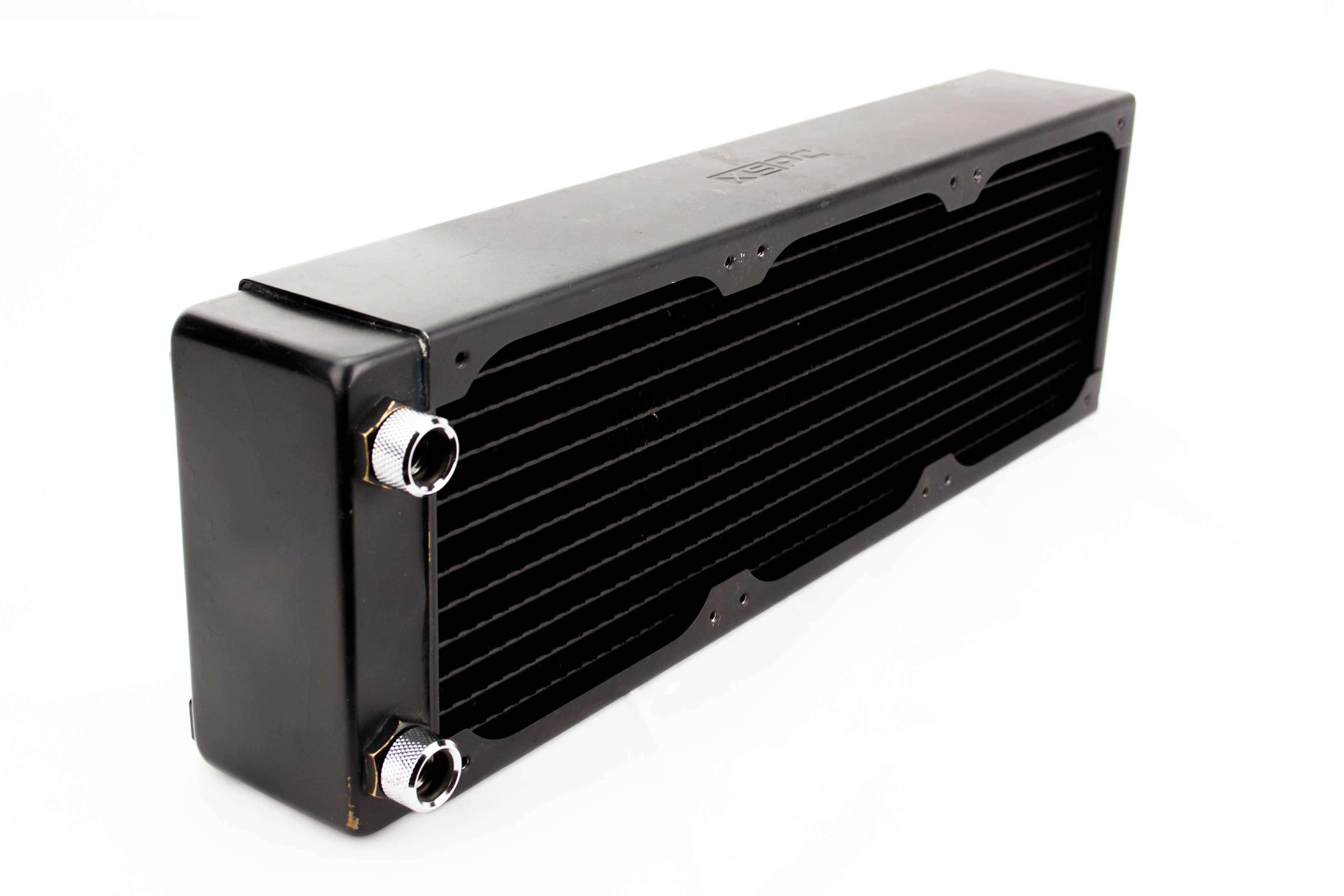
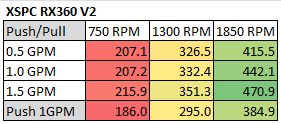
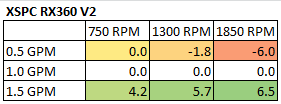
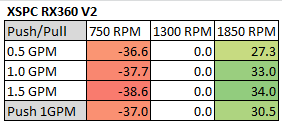
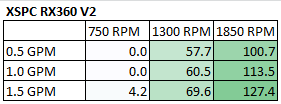
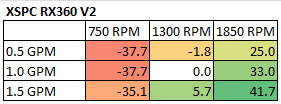
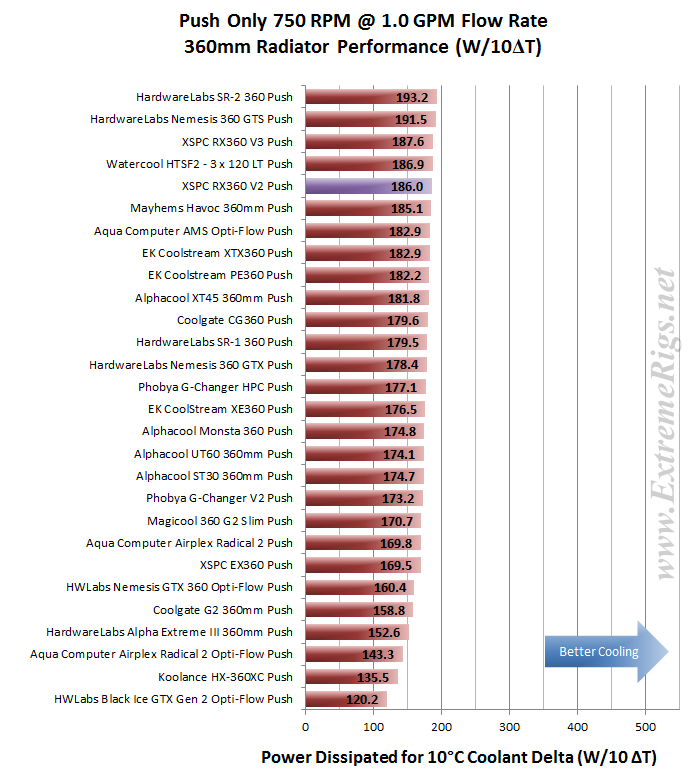
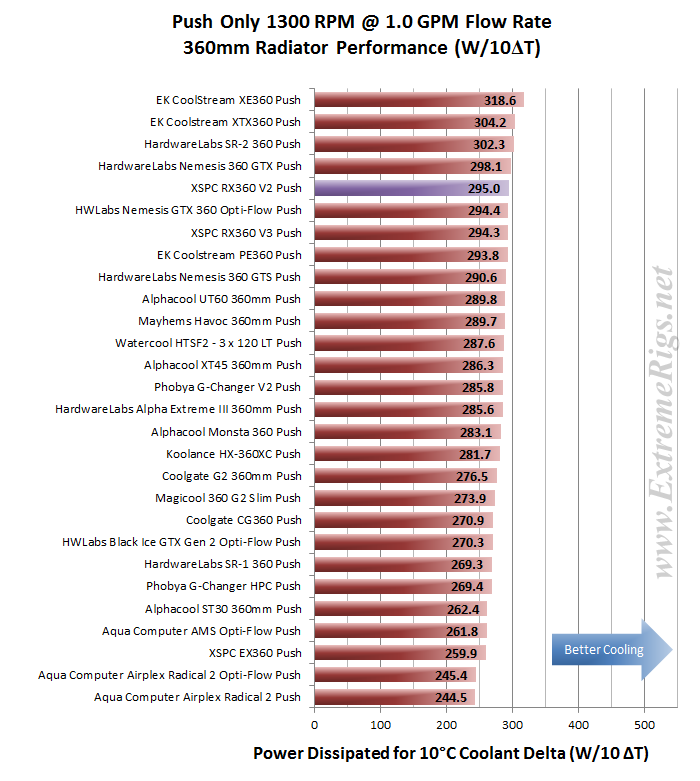
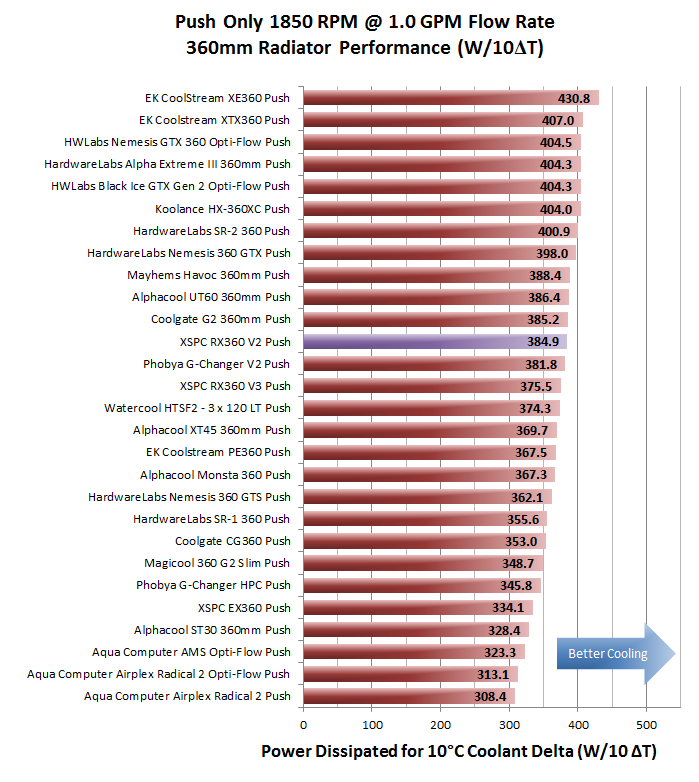
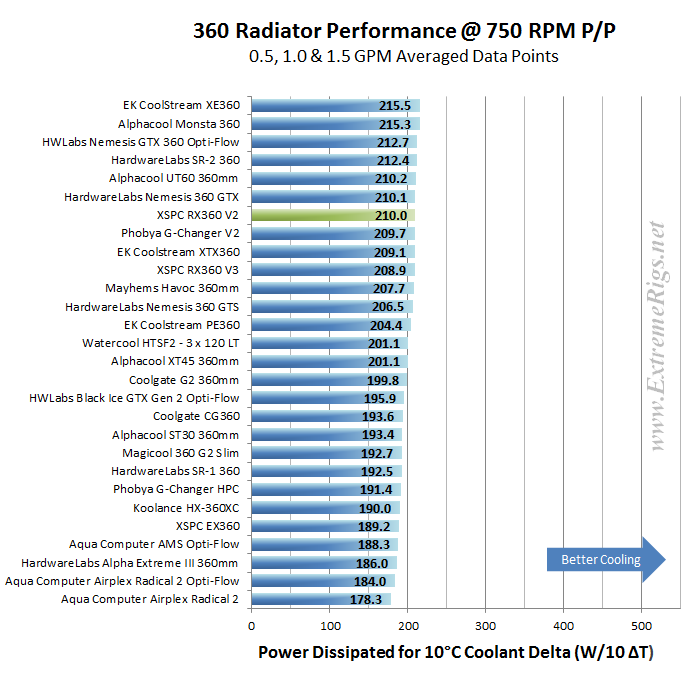
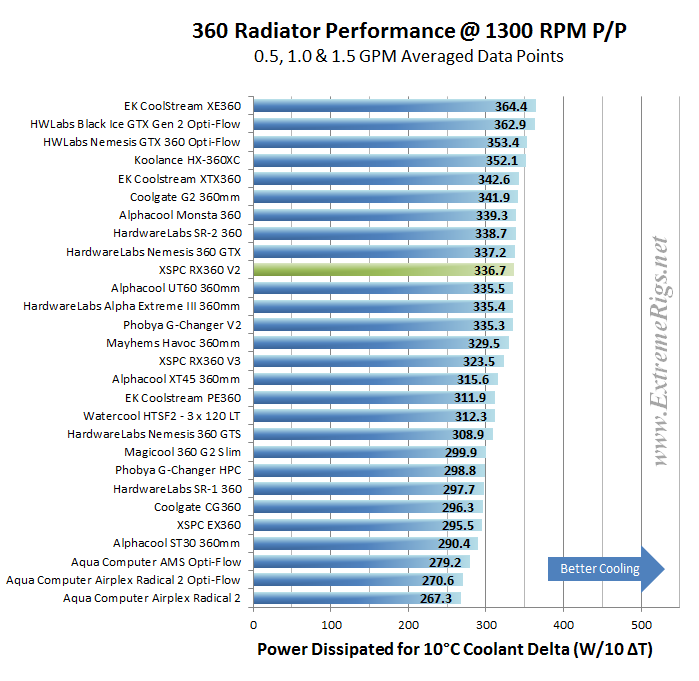
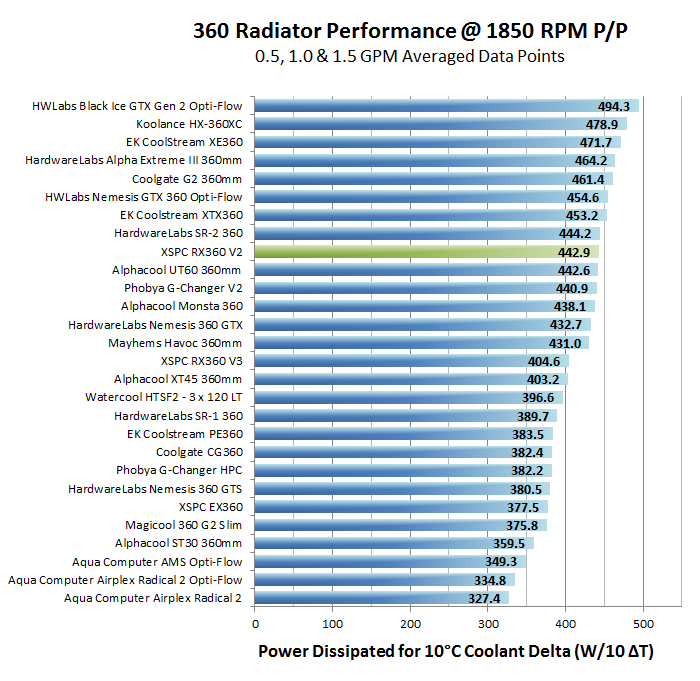
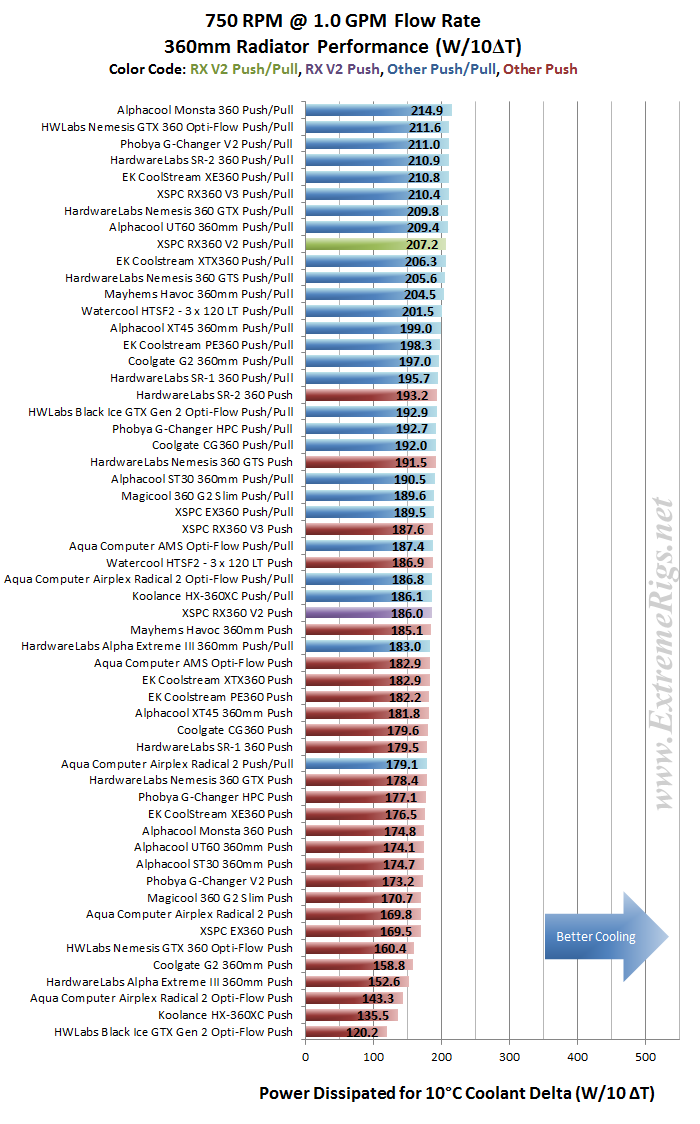
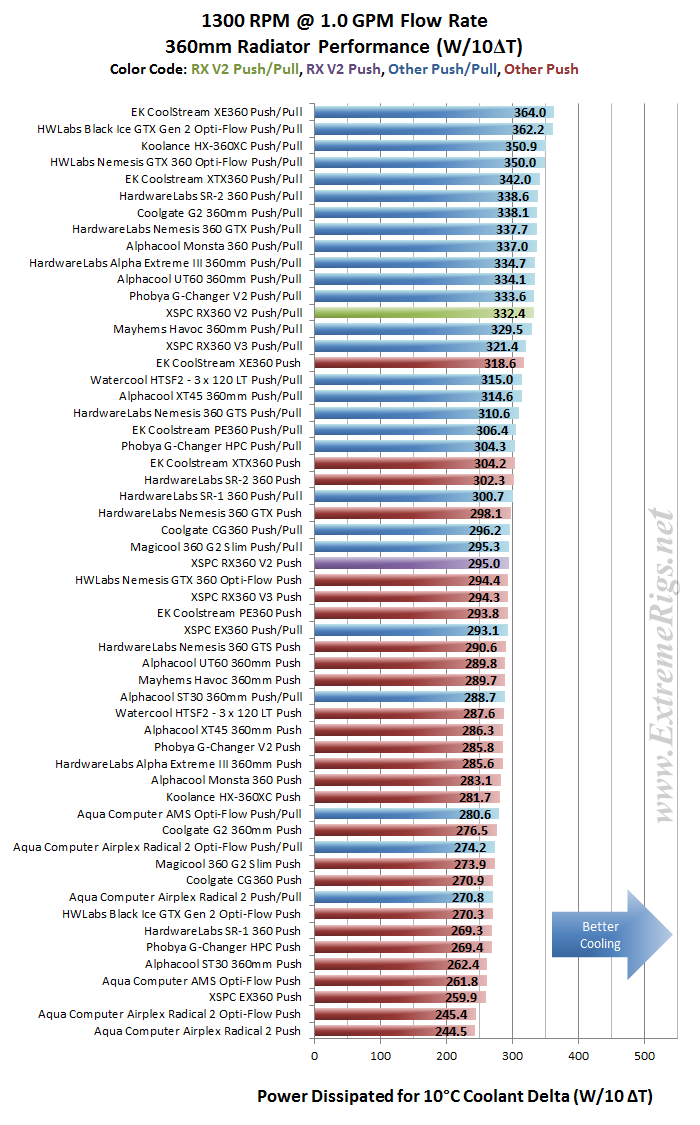
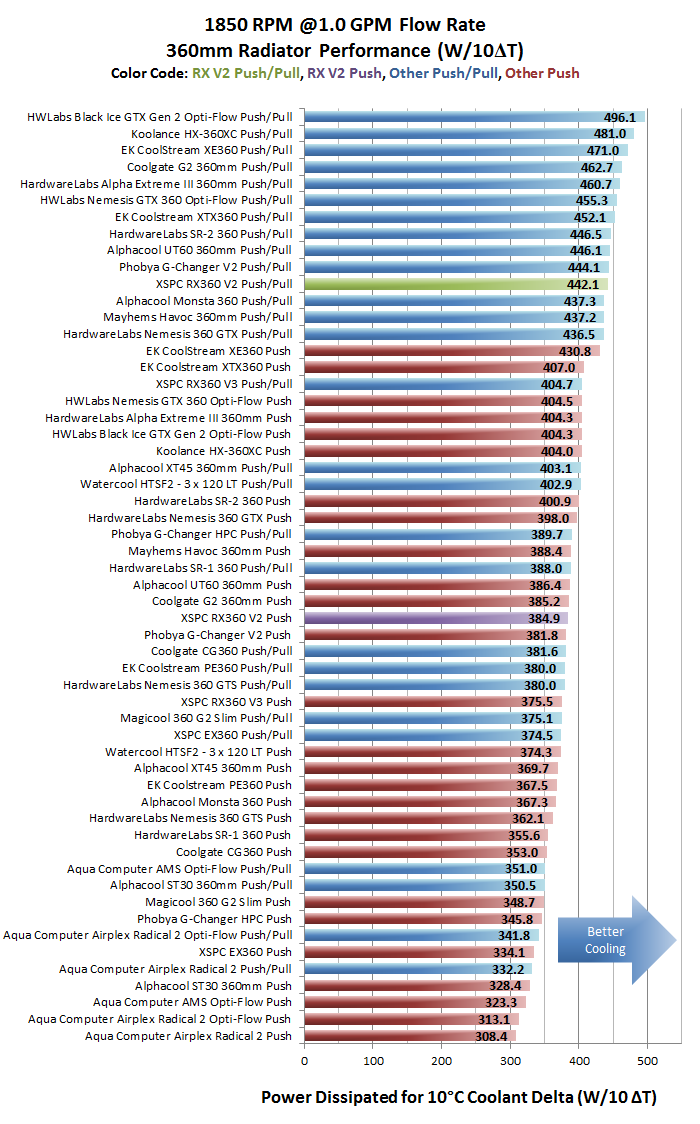
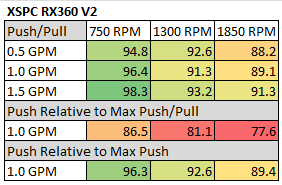
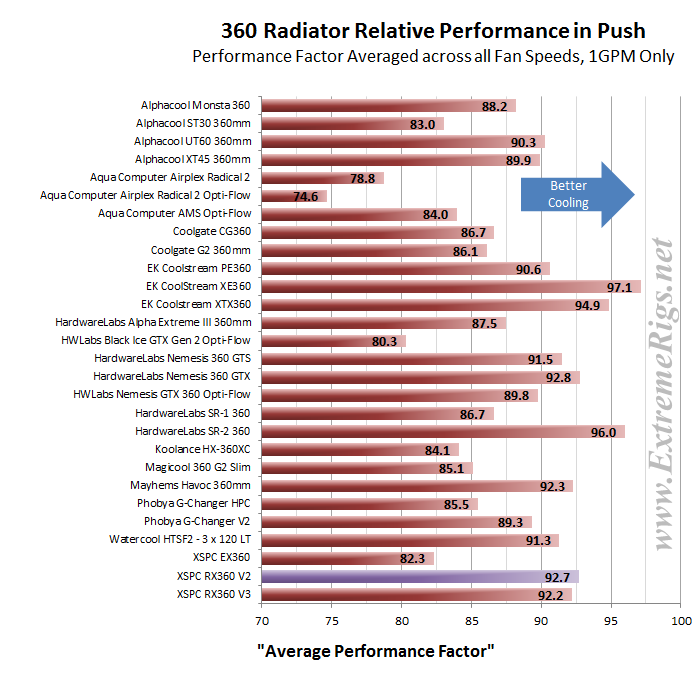
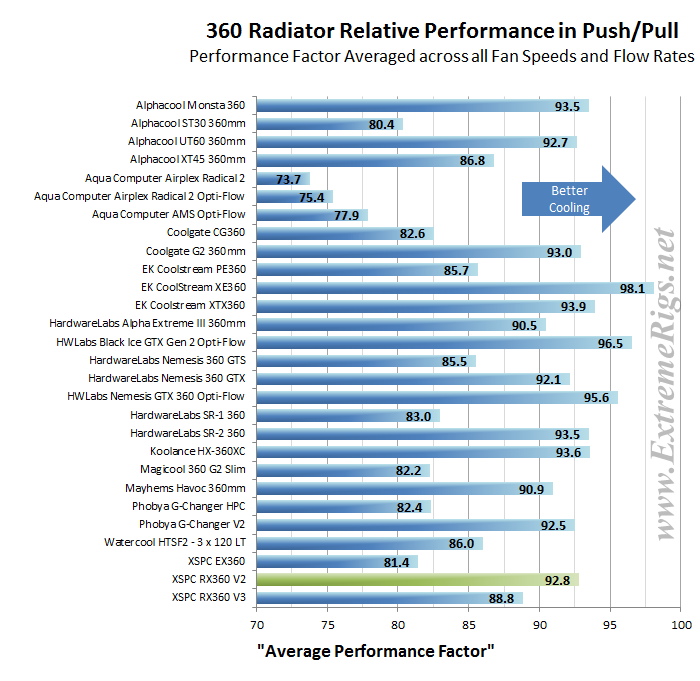



[…] Alphacool Monsta 360 Radiator Alphacool ST30 360 Radiator AquaComputer Airplex Radical Copper 360 Radiator AquaComputer AMS 360 Radiator Coolgate CG 360 Radiator EK SE 360 Radiator EK XTX 360 Radiator EK XE 360 Radiator Hardware Labs Black Ice GTX 360 Radiator Hardware Labs SR2 360 Radiator Phobya G-Changer HPC 360 Radiator XSPC RX v2 360 Radiator […]
Comments are closed.